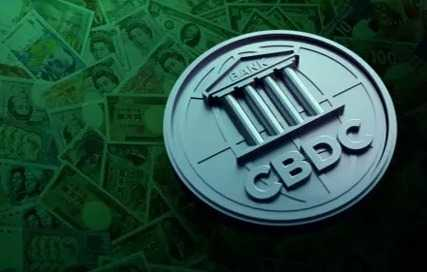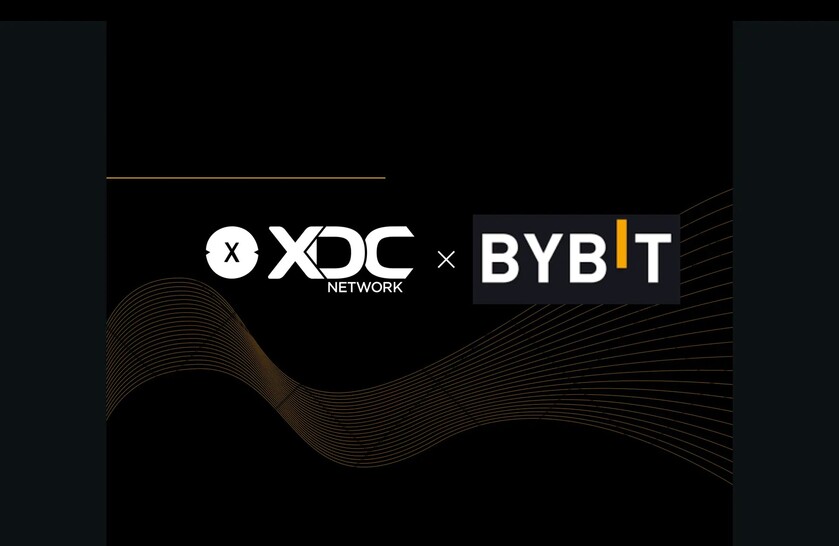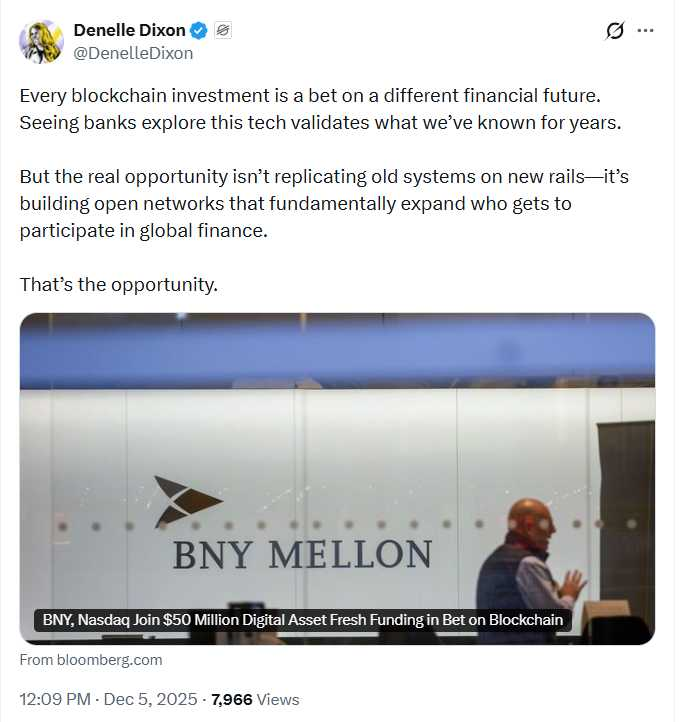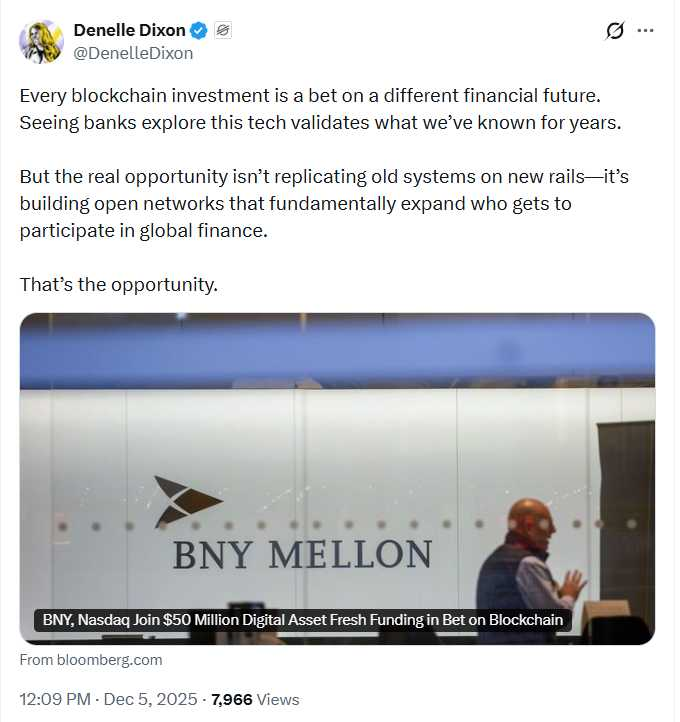White House reports on central bank digital currencies "point the way" but Congress still has to pass legislation on these issues, Congressman Jim Himes told CoinDesk.
A U.S. central bank digital currency (CBDC) may be one step closer to reality after the White House published several reports analyzing the technical and policy aspects of a digital dollar last week. Congressman James Himes (D-Conn.) has been an outspoken advocate for a U.S. central bank digital currency, going so far as to publish a white paper on the issue in June 2022.
Himes, who chairs the House Financial Services Committee’s Subcommittee on National Security, International Development and Monetary Policy has also overseen a number of hearings on crypto assets and their role in national security and related issues.
The six-term Congressman spoke to CoinDesk after the White House, Treasury, Commerce and Justice Departments published half a dozen reports in response to U.S. President Joe Biden’s executive order on crypto on Sept. 16.
The following interview has been edited for clarity.
CoinDesk: Thank you so much for joining me. I really appreciate it.
Congressman Jim Himes: Yeah, happy to be with you.
I'm sure you must be busy and it's Friday, so let's get right into it. It's been a pretty intense day with the six reports published by the White House, as well as several federal agencies or departments today. But I know you in particular, have been talking about central bank digital currencies for quite a while now, and of course, you published a white paper titled “Winning the Future of Money,” I think in June, right, a few short months ago. What's your take on the multiple papers published today by the White House and the Treasury Department on this issue of central bank digital currencies?
The element of the various releases on central bank digital currency didn't break a lot of new ground. I was very happy to see that in the text, they sort of emphasize the importance of the United States not getting left behind technologically, I actually think that may be one of the more compelling reasons to continue, but it is a lot of work on the technological side, on the implementation side, making sure that if we do a CBDC, that it's really a very robust network with all of the safety considerations we would have.
I was glad to see they said, "let's keep cranking away." But, that's not enormously groundbreaking, I think. Overall, sort of when you move outside of just the narrow alley of central bank digital currency, I think the White House's releases were a good contribution to an effort that is really picking up very notable momentum in Washington.
I actually think the action is largely on Capitol Hill, in the Financial Services Committee on which I sit, there's a bipartisan effort to get a stablecoin bill put together. On the Senate side, you've got obviously a Agriculture Committee bill that would describe the authorities of the Commodity Futures Trading [Commission].
Where the rubber meets the road, I think Congress is making good progress. Now, not necessarily like we're going to pass new laws in the next couple of weeks progress, but you have to remember that two years ago, if you'd said “digital asset” or “cryptocurrency” in the halls of Congress, most people would look at you funny and not know what you were talking about. So I do think that there's been real progress on Capitol Hill.
Out of curiosity, have the reports today, or even just your own views on central bank digital currencies, have they evolved? Or where do you see any changes between what you've published, what the Fed is looking at, what Treasury published, and just this conversation in general that we’re hearing right now around CBDCs?
I think the story of the last couple of months has been one of the market re-instilling some rationality to the digital assets market. An awful lot of people have lost an awful lot of money, and that makes me sad, but – and when I say an awful lot of money, I mean you hear figures like $2 trillion thrown around, that's just a staggering amount of money. That says two things. Number one, clearly, people's desire to expose themselves to digital assets got way ahead of the underlying value, however you would wish to define that. And for that and other reasons, I think it's actually really good that Washington is beginning to focus hard.
Now, that doesn't mean that Washington is going to satisfy people. When you talk about digital assets, you've got points of view often extremely aggressively expressed, I'm here to tell you, ranging from the pure libertarian – total anonymity, untraceable, whatever – to the world of a central bank digital currency, where you see China actually operating what, my guess is, there's not a lot of privacy protection there.
You also have the interesting fact that we still don't have a digital asset that is proving to be a robust means of exchange, and it may be fun to contemplate questions like whether bitcoin is an appropriate asset class in your 401K. But where this will really be interesting for people is if and when it becomes a medium of exchange, and you can send money to South America or buy a consumer good in the UK, and obviously, we're not there yet.
To that point, do you think that the reports that we saw today are really doing enough to address these questions of usability and still maintaining some semblance of privacy, some semblance of not being a tool for just censorship or surveillance?
Yeah, I think they point the way. The language was pretty strong on urging the regulators to really take a firm hand with the more irresponsible behavior that we've seen. There are an awful lot of people buying into digital assets that are either imperfectly described, maybe that's a euphemism, where people really don't know what they're buying, to out and out fraud. Of course, the SEC and others have been pretty aggressive about going after the fraudsters
I think that the administration's releases point the way, but the real action, the real specifics aren't in those releases, right? The real action and the real specifics will ultimately be incorporated into legislation in the place where I work. And like I said, I'm gratified that there's been a lot of education, but I do think that the time is now to start to start moving something.
I'm very hopeful, for example, we're running out of time in this Congress, but I'm very hopeful that the Financial Services Committee might produce a stablecoin regulation bill, and … the Senate seems to be taking the lead on the jurisdictional questions of what regulator has authority over what product and hopefully, we'll make some real progress. And if we don't actually get anything done in this Congress in the few months remaining, then in the next Congress, we're in a position to do so.
Just jumping on that, do you think that the level of education is at a point now where once you're done with this stablecoin bill, and between you and me, I think the stablecoin bill sounds a lot like, between Libra, between the collapse of Terra/Luna, there's been a lot of stablecoin-specific action. Do you see other crypto issues, to the SEC and CFTC jurisdiction, for example, coming up and being something that we can see actual legislation on within the next maybe a year or two?
Yeah, absolutely. In fact, you already see it on the Senate side. It's not where I work, but on the Senate side, you already see the Senate Agriculture Committee defining the role for the CFTC, so you already see that happening. Again, I wouldn't anticipate – particularly with an election coming up in seven weeks or so – I wouldn't anticipate that that will pass. But this is how we start educating and discovering kind of what the various equities are.
I sometimes joke, this is a really interesting and important space, but it was introduced to the Congress in just about the most catastrophic way possible. And, of course, I'm referring to the hearings that the Financial Services Committee held on Libra. Prior to that, I don't know that many members of Congress had ever even considered the concept of a stablecoin or knew much about digital assets. I sometimes joke that if you had a bunch of evil lobbyists sitting around after a bottle of whiskey and saying, "what's the most catastrophic way to introduce the Congress to a concept," one guy would say, "well, give me [Meta (formerly Facebook) CEO Mark] Zuckerberg." And then let's have him talk about a pervasive global currency. I mean, it was just a catastrophe, right? That sort of soured an awful lot of people for no particularly good reason. I mean, I don't know that there's anything wrong with Mark Zuckerberg, I'm just saying that as a sort of presentational matter that may not have been the best introduction.
You've had a lot of work done since Libra to educate people. I am hopeful that in the next year or so, we may see a really serious stab at providing some regulatory clarity here.
Not to get into specifics here, but do you see any projects or any efforts out there – and feel free to not name specific names – but any projects that are kind of the counterexample to Libra? Ones that lawmakers can look at and say, "wow, okay, this makes sense, this is something that appeals to me, and this is helping me understand what you're trying to do better?’
I probably would not get in the business of predicting which models which stablecoins are likely to again cross that gap of becoming a common medium of exchange. We're not there yet, but there's no question in my mind that there's a use case there. Whether stablecoins are going to replace the current payment systems that are out there, everything from your debit card to Zelle and Venmo and all the various payments, I don't know, I'm a little skeptical about it. You don't you don't look at those current payment methodologies and say, "boy, this is really a pain in the neck.”
But, I have no doubt that two things are gonna happen. I sometimes draw an analogy, and maybe I'll be accused of being naive here, but I sometimes draw an analogy between the way we're thinking about crypto assets generally today, and the way we were thinking about the internet in, let's say 1996 or 1997. We sort of sensed that there was something there. There were all kinds of what, in retrospect, were absolutely wacky ideas. We're going to deliver cat food or kitty litter to your door for free, all these sorts of models that turned out to be sort of crazy. I'm not sure that we would have necessarily in the mid-90s predicted exactly what the internet was going to do. But lo and behold, it transformed our lives, really. I sort of feel like we're in a parallel moment like that.
If we sort of expand the aperture to blockchain generally, not just digital assets, there's no question in my mind that there's going to be some transformative aspects of it. But in the meantime, we're going to see a lot of nonsense, and we may not know that it's nonsense until an awful lot of people have lost a lot of money and in a non-common sense business model.
So I want to jump on something you said just now, referring to existing payment systems and tools, and this is kind of tying back to CBDCs, but the Fed recently announced that it's hoping to launch FedNow as a real time payment system within the next year. Given that, does the calculus around focusing on a central bank digital currency or digital dollar, is it the same? Or does it have to change now that the Fed is actually moving to be more active with this new system that you can argue solves a lot of the same kind of issues that digital dollar would try to solve?
Yeah, I think so. I think that's right, in the wholesale arena. I think that FedNow is probably a part of a really good, innovative modernization of our financial sector generally. It was not that long ago that trading 100 shares of stock was a $200 commission proposition with five days of closing, there's all kinds of risk associated with that. There's no reason for it, right? The only reason that transactions don't close instantaneously today is that the architecture doesn't support that. And so I do think FedNow is a really good step in the direction of where we want to be, which is taking out an awful lot of the time that used to be involved in the clearing and settlement of securities and currencies and commodities.
I think it's really good, but where I don't think we're going to go, I wouldn't say, "well, it's going to penetrate into the retail banking world." There are those who make the argument that individuals should be able to open an account at the Federal Reserve, or maybe they think it's a postal banking thing, a public banking thing. The idea of postal banking is certainly not unprecedented, and it's worth thinking about, I guess.
I do think that the notion that we're going to take the Federal Reserve, who already has massive regulatory duties, and by the way, needs to run our monetary policy and say, "now, you're going to be the banker to 320 million Americans," and in doing that, we're going to wipe out what is one of the primary competitive advantages of the United States, which is our banking sector, I think that's probably not likely. There may be those who think it's a good idea, but I think they're in a pretty small minority.
Fair enough. So something that I think is a little unique about your experience is you chaired the Subcommittee on National Security in House Financial Services and you're part of the Select Committee on Intelligence. Just looking to this idea through those lenses specifically, are there any maybe national security or national interest questions that you think a digital dollar could really address? Or just how are you looking at these questions or even the accessibility through those lenses?
I might add to your list too, I chair the Select Committee on Economic Disparity and if I can take you off course for one second, I get really excited about the possibility that digital assets could ultimately bring more people into a bank environment, or if not a bank environment, at least provide products and services that are cheaper and more relevant to more people.
So let's imagine a central bank digital currency exists. My intuition is, and it's only my intuition, is that it might have a special appeal because it's full faith and credit, it might have a special appeal to a percentage of Americans who are people in our country, by which I mean immigrants, who don't trust the banking system, who are skeptical of financial institutions, but if they believe that the money on their phone is full faith and credit, they might actually use it for payment, they might use it to do cheaper, money transfers, perhaps to family and other countries.
So I get pretty excited about the opportunity to expand in a cost effective way, services to people who are underserved, or if they are served, they're served by very high cost financial products. That's not your question, but let me come back to your question, which is that of course, I think that, like anything else, like any technological innovation, digital assets pose both opportunities and threats to our security. The obvious one that one talks about all the time is, anonymity poses some very serious issues. I mean, who really wants to use a fully anonymous payment mechanism? Yes, my libertarian friends want to use that because they don't want the, whatever the government knowing what they're doing.
But the other group of people who use that, of course, are those who are up to no good whether it's drug dealers or terrorists or human traffickers. So there's that and then there's also the interesting question and if you were British or Chinese or Korean, you would probably regard this differently than then I, that we regard it as Americans, which is the U.S. built SWIFT Network the clearing programs, the international payment mechanisms are one tool with which we are familiar and when we need to we can get visibility when and – this may be a particularly American thing – when you go before a judge and demonstrate probable cause you can actually access the information of those of whom you suspect breaking of breaking the law. That may not be true of other payment systems that are hosted or sponsored by other countries.
Editor’s note: Due to technical difficulties, Rep. Himes was asked to repeat his response to the final question.
An awful lot of people, the estimates are that 19% or so of Americans are unbanked or underbanked. Part of that, of course, is that a lot of people have suspicions about the big financial institutions and I'm intrigued by the possibility that a full faith and credit CBDC for example, might might offer the confidence that would cause somebody to use that as a payment mechanism or as a way to remit money to a home country or something like that. I do think there's real possibilities there, not to mention the possibilities that could be generated either by the private sector directly or by the private sector building on a digital token that was a full faith and credit card thing.
In the more traditional realm of national security there's what we always worry about, which is the question of anonymity if you have a payment system into which we have no visibility and that could be a foreign payment system or a payment system, which is deliberately obscured like what you see with some of these mixtures and such. There's, I think, two categories of people who really need anonymity. There's libertarians, who want that for their own reasons, and then there's, of course, people for whom anonymity is a professional necessity and that's the folks that are up to no good.
There may be others but obviously, we do not want a totally opaque means of payment that could be abused by terrorists or dealers or human traffickers. The other and the last thing I would say is to the point of transparency we're good in this country in terms of not abusing American civil rights or U.S. person civil rights, I should say, the distinction being that if you're in this country, regardless of if you’re a citizen or not, you're entitled to constitutional protection. We have a system that says that if you convince a judge that Sam is potentially committing a crime, that judge will give you permission to get evidence of that crime. There are plenty of countries where you wouldn't want that, because they don't care about civil rights. That's a pretty important part of our justice system here.
Lastly, I would just note we don't want technological developments to get radically away from us. The United States since World War II has been a technological leader in every realm, and we don't want to be – I suppose it's okay to be a fast follower, but we really don't want to be left behind by Chinese innovations or even European innovations. We may not worry about the Europeans as a foe, but every time I contemplate the possibility that we might not be at the technological forefront, it's sad.



























